Recently I have been examining discretizations of the Cornu spiral (or Euler spiral or clothoid), which have a remarkable self-similar fractal property. While this analysis of the discrete Cornu spiral is still in progress, it felt incomplete without first considering that the continuous Cornu spiral itself is fractal.
Unlike the better known logarithmic spiral1which I know as the geometric spiral but apparently this is not a standard name. The logarithmic spiral is often the most natural spiral. or Archimedean spiral2or arithmetic spiral, the Cornu spiral is described by starting a finite distance out of the spiral and then spiraling inwards. The defining property is the curvature varies linearly with the arc length from the starting point; going in either direction, then, yields a double-ended spiral. Thus the coordinates of the spiral are given by the Fresnel integral
![]()
which has no closed form solution. Integrating to infinity gives a finite value, the center point of the spiral. In contrast to the logarithmic or Archimedean spirals which only have finite arc length in a bounded region, and so are necessarily one-dimensional, the cornu spiral has infinite arc length and could be potentially any fractal dimension from 1 to 2.
Let us thus compute the Minkowski
or box-counting dimension of the cornu spiral. To do this, for a length
we count how many
squares of side-length
it takes to cover the whole cornu spiral. For
a
-dimensional figure we expect
![]()
(where is a
-dimensional “area”) and thus define the Minkowski
dimension as
![]()
In the normalized cornu spiral, the radius of curvature at an arc length
is given by
as is the inverse of the curvature and curvature
goes linearly with length. When
is very large the spiral approximates a circle of
radius
around the center point. After an
additional rotation around the center, our new arc length is
, and so the new radius of curvature
is
![]()
So, the gap between one spiral turn and the next is
![]()
This alternatively could be found using derivatives:
![]()
Now we know enough about the shape of the spiral to count how many
boxes are needed to cover it. Say the boxes are squares
with side length
. Then within some critical radius
boxes from consecutive turns start to overlap,
and it is best to just cover the whole circle with
![]() boxes. Note that
boxes. Note that ![]() , the gap between one spiral turn and the
next at the critical radius
, the gap between one spiral turn and the
next at the critical radius .
Outside of this critical radius the number of boxes is simply the
length of the curve divided by the width
of each box. Thus the total number of boxes
is:3This is an approximation – after all, it is not
an integer – but the error term goes to zero as
, and even if the error term did not go to
zero, a constant factor on the number of boxes has no effect on the
fractal dimension.
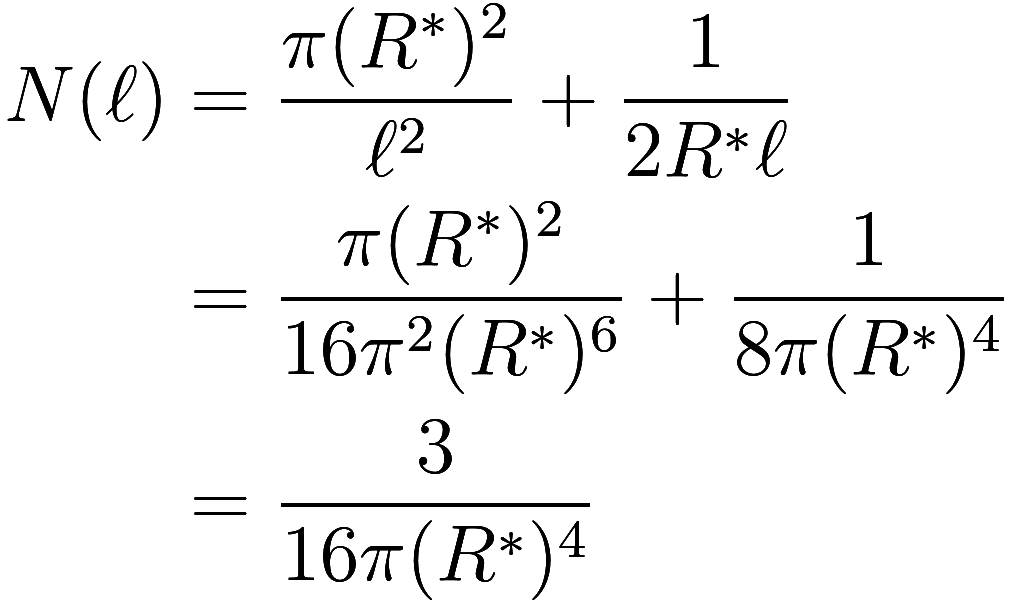
Curiously we find that one-third of the boxes needed to cover the
spiral are within the radius , and two-thirds are outside of that radius.
Therefore the Minkowksi fractal dimension is 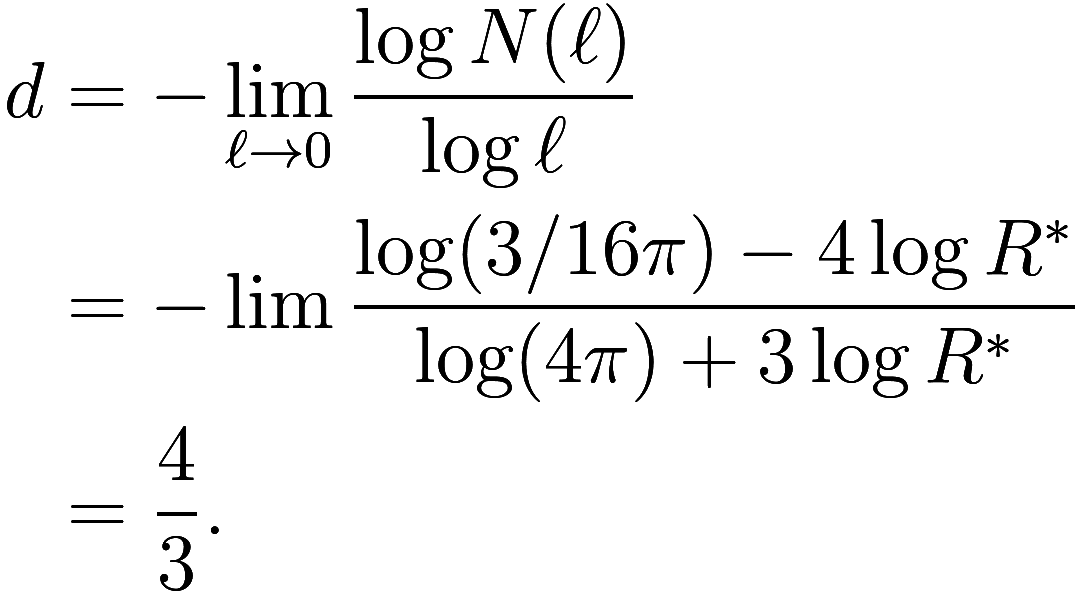
We can generalize this result, and consider similar “power law”
spirals. Suppose that we have a spiral such that, at a radius of from the center, the gap between consecutive
turns scales like
; for the cornu spiral we had
. The logarithmic spiral satisfies
, and the Archimedean spiral has
. The total length of the spiral from
to
is approximately4We are
supposing that the spiral is always tangent to a circle centered at the
spiral center, which is not correct.
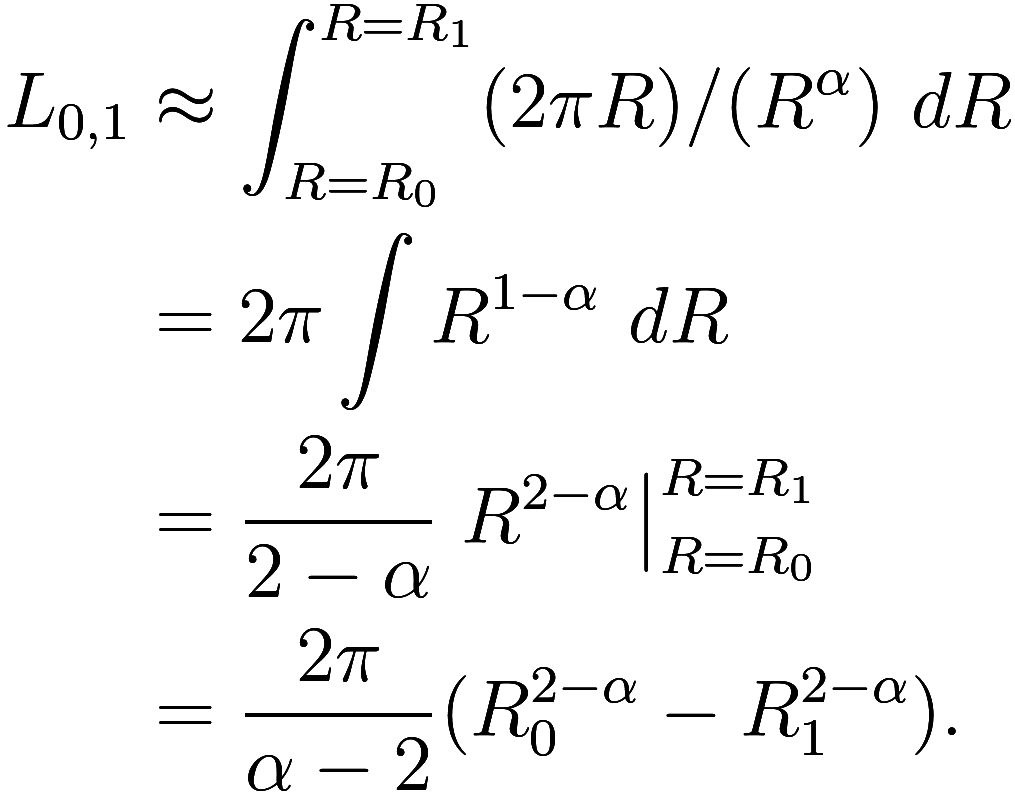
where . Whoops – this approximation is not
always great: for
, it is problematic when
, and for
when
, as in those cases the spiral
becomes quite steep. At
it is simply off by a constant term that
does not depend on
. So, being more careful we find
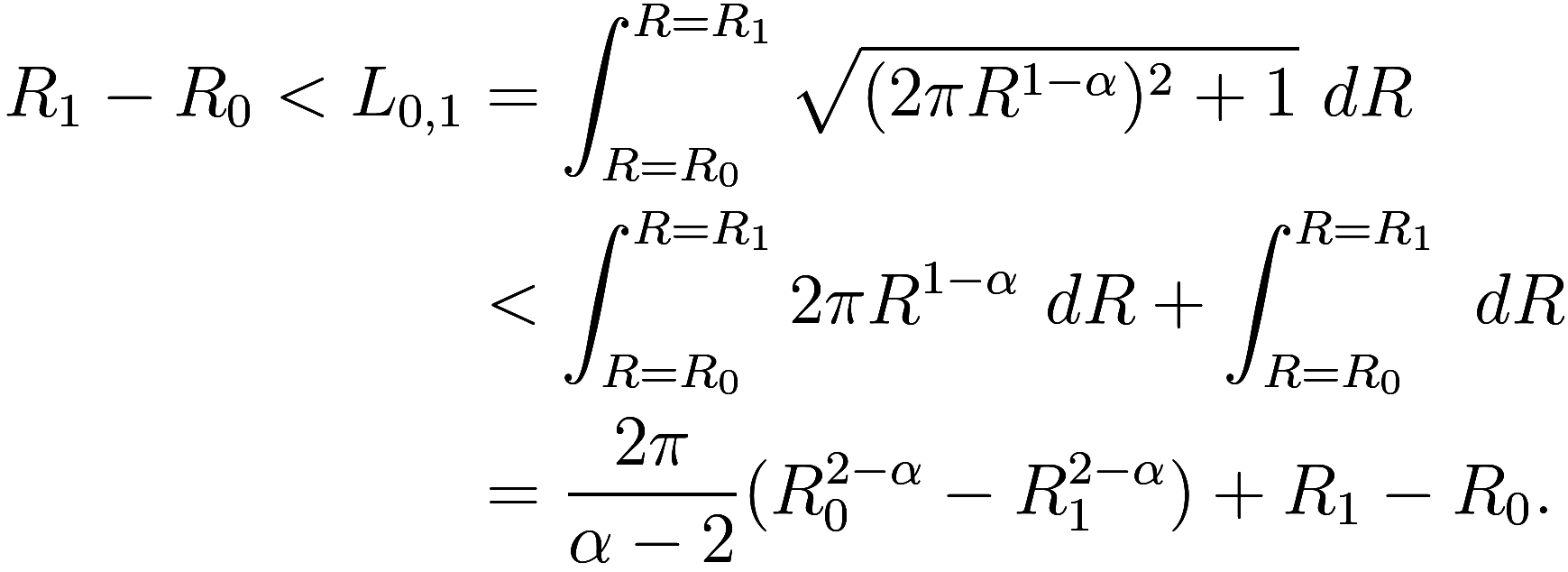
where again . For
we have instead
![]()
We see that for the spiral has finite length as
, and so it is not a fractal and has
dimension 1. Only for
do we have a fractal.
Now we proceed as before, covering the spiral with boxes of size such that within a critical radius
the whole circle is covered with no gaps, and
. We fix some outer radius
. Then the number of boxes is
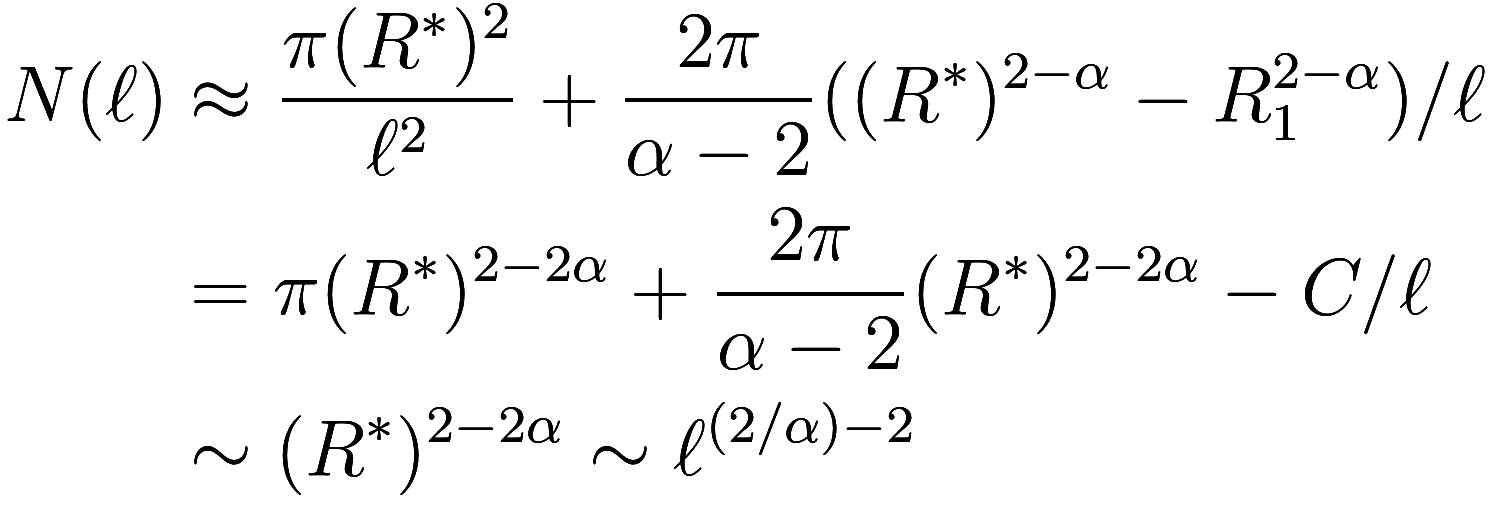
Therefore the Minkowksi fractal dimension is . Here we neglected the error term in
the integral for
as it is small for
in the limit
. If
, we instead find
![]()
so while the length of the spiral is infinite the fractal dimension is still only 1!
Follow RSS/Atom feed for updates.